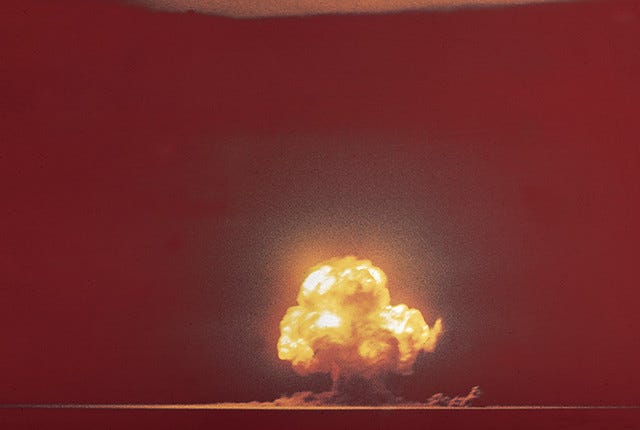
After watching “Oppenheimer” (2023), I started searching for the official Brandeis Land Statement announced in 2021, specifically for one phrase in Nolan’s film that caught my attention. Let me explain myself.
2023 was dominated by heated debates surrounding the film "Oppenheimer." Beyond being a biographical account of J. Robert Oppenheimer, the movie delves into the perils of science and the international power struggles of the Cold War, among other themes. However, it also sheds light on critical issues, including the historical struggles of indigenous communities in the United States.
Various commentators have already raised concerns about the erasure of Hispanic and indigenous populations from the film's narrative. Notably, critics emphasize a dialogue from one scene during the second part of the movie, where Oppenheimer appears as the face of TIME Magazine before meeting President Truman. At the start of their conversation, the president seems cheerful, and this is the exchange with the morally conflicted protagonist:
Truman: "What should we do with Los Alamos?"
Oppenheimer: "Give it back to the Indians."
Los Alamos served as the site where atomic bombs were developed and tested, a vast space in New Mexico with millions of dollars invested.
Initially, like many participating in social media debates, I viewed Oppenheimer's statement as a nearly revolutionary response, displaying respect and empowerment for Native American nations. I believed it could offer a glimmer of hope to indigenous people, particularly amid the current climate crisis.
However, I soon discovered a darker history behind the phrase "give it back to the Indians" in the United States. This expression denotes something that has become useless, no longer serving a purpose, and should be "given back to the Indians." This phrase conceals the troubling history of exploiting and disregarding indigenous lands throughout the country.
In an episode of “The Sopranos,” actor Tony Sirico, portraying a sad and angry Pauli, engages in a conversation with others after a funeral and makes the following comment: "I lost Ma last month! You can take 2007 and give it back to the Indians!" Here, 2007 represents a bad year due to the deaths of Bobby and his mother, suggesting it is better to return it to the Indians.
Similarly, Ella Fitzgerald has a well-known song titled "Give It Back to the Indians," which originated from the 1947 musical "Too Many Girls." The song depicts a dilapidated Manhattan after Peter Minuit purchased it from the local Native population. In a moment of hopelessness, the lyrics call for "giving it back to the Indians."
Following the Trinity test, Los Alamos became Pauli's 2007 or the Manhattan described by Ella – something that perhaps needed to be discarded. We now know that Trinity had considerable health and land use effects on the people living nearby, with radioactive fallout reaching 46 states. In this context, Oppenheimer's statement might not be as revolutionary as initially perceived. Perhaps he simply wanted to "give it back" to the Indians because it had become useless, something to relinquish and hand over to the Indians to deal with the problem.
This phrase carries a deeper connotation, reflecting a historical pattern of exploiting and subsequently disregarding indigenous lands and communities. It reminds us of the injustices Native Americans have endured over the years – from broken treaties and forced relocations to environmental degradation.
In the context of Oppenheimer's life and scientific contributions, it becomes crucial to examine how we, as a society, treat indigenous communities. While the film may accurately portray Oppenheimer's achievements and struggles, it should also serve as a stark reminder of the need for a more comprehensive understanding of history.
The seemingly innocent phrase "give it back to the Indians" carries historical baggage, symbolizing the long-standing marginalization of indigenous voices and their dispossession from their ancestral lands. Acknowledging this history is vital for building a more inclusive and equitable future.
Upon reflection, I revisited the issue of how my university acknowledges the native ancestral land. I discovered that they established an Indigenous Land Statement Committee in 2021. However, I couldn't find any updates on whether the committee's proposal for a land acknowledgment has been approved by the university or if they are taking further steps to address the marginalization of indigenous history.
Is the Brandeis community doing enough to acknowledge our own indigenous history as an institution? It is an urgent question we need to address soon.





Your ability to weave narratives is great danny...keep it up.